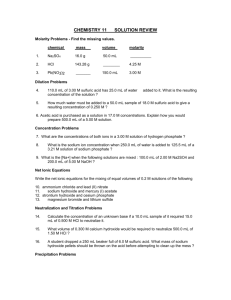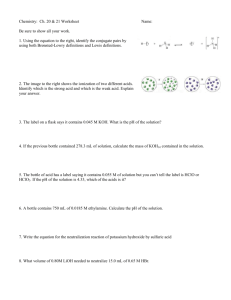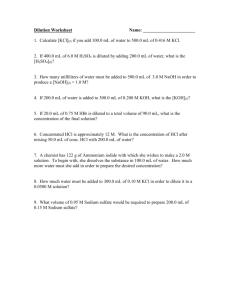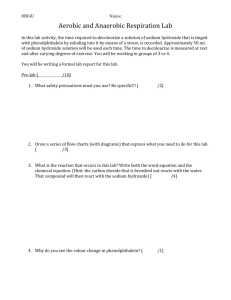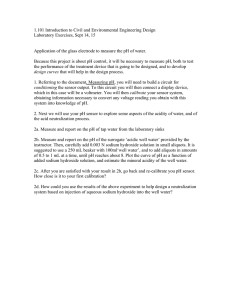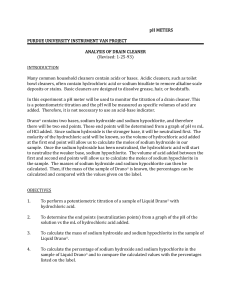Solutions Sample Problems Acids and Bases Name ________________________________________
advertisement
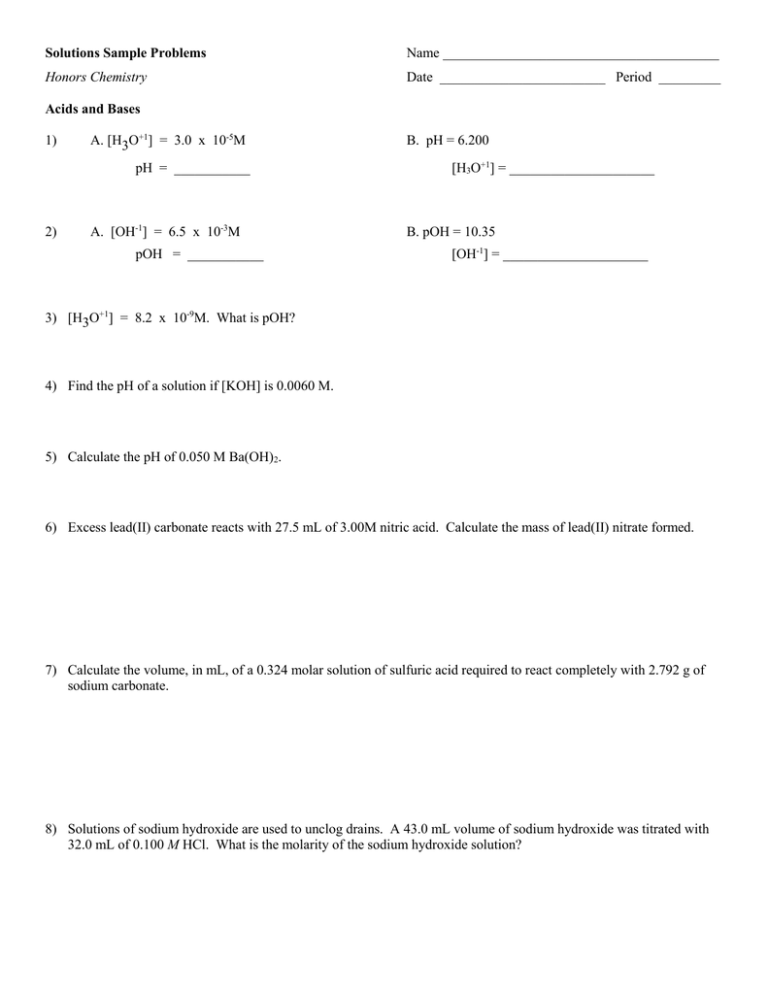
Solutions Sample Problems Name ________________________________________ Honors Chemistry Date ________________________ Period _________ Acids and Bases 1) A. [H3O+1] = 3.0 x 10-5M pH = ___________ 2) A. [OH-1] = 6.5 x 10-3M pOH = ___________ B. pH = 6.200 [H3O+1] = _____________________ B. pOH = 10.35 [OH-1] = _____________________ 3) [H3O+1] = 8.2 x 10-9M. What is pOH? 4) Find the pH of a solution if [KOH] is 0.0060 M. 5) Calculate the pH of 0.050 M Ba(OH)2. 6) Excess lead(II) carbonate reacts with 27.5 mL of 3.00M nitric acid. Calculate the mass of lead(II) nitrate formed. 7) Calculate the volume, in mL, of a 0.324 molar solution of sulfuric acid required to react completely with 2.792 g of sodium carbonate. 8) Solutions of sodium hydroxide are used to unclog drains. A 43.0 mL volume of sodium hydroxide was titrated with 32.0 mL of 0.100 M HCl. What is the molarity of the sodium hydroxide solution? 9) A volume of 25.0 mL of 0.120M sulfuric acid neutralizes 40.0mL of a sodium hydroxide solution. What is the concentration of the sodium hydroxide solution? Review: Solve for ∆H in the following problems: 10) Calculate for ∆H the reaction 2 Al (s) + 3 Cl2 (g) → 2 AlCl3 (s) from the data. 2 Al (s) + 6 HCl (aq) →2 AlCl3 (aq) + 3 H2 (g) ∆H = -1049. kJ HCl (aq) →HCl (g) ∆H = +74.8 kJ H2 (g) + Cl2 (g) → 2 HCl (g) ∆H = -1845. kJ AlCl3 (s) → AlCl3 (aq) ∆H = -323. kJ 11) Determine ∆H using heats of formation. Hint: Make sure to balance the equation. NH3 (g) + O2 → NO2 + H2O(g) 12) Determine ∆H for the combustion of ethane (C2H6) using bond energies: C2H6 + 5O2 → 3CO2 + 4H2O New Method: Solving for ∆H using Calorimetry 13) When a 15.3 g sample of KOH dissolves in 70.0 g of water in a calorimeter, the temperature rises from 22.4˚C to 66.4˚C. Calculate the ∆H for the process and write it on the correct side of the equation. KOH (s) → K+(aq) + OH- (aq) ∆H = ? 14) When 16.9 g of sodium hydroxide solution reacts with 50.0 mL of hydrochloric acid solution, the temperature rises from 21.3˚C to 30.9˚C. a. What is the ΔHrxn in kJ/mol? b. Write the net ionic, thermochemical equation for this reaction. c. Draw an energy diagram for this reaction.
